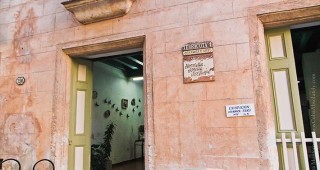
Right across Havana harbor, Plaza de San Francisco is one of the first three built in the 16th century. It takes its name from the Franciscan convent built there. The plaza became the site of a market that was moved to Plaza Vieja after complaints from the monks because of the noise. Aside from the Convento de San Francisco de Asís, the spacious square is dominated by Lonja del Comercio on the north side and the the Aduana (Customs House) and Sierra Maestra cruise ship terminal on the east side with the Fuente de los Leones in the center. The Plaza de San Francisco underwent a full restoration in the late 1990s.
Formerly a small inlet covered by the waters of the bay, Plaza de San Francisco dates from 1575. From the start it was a commercial center, and during the colonial period a fair took place here every October with coin and card games, lotteries and cock fights – perhaps an early sign of Havana’s future role as a gambling mecca. One of the terminals of the Zanja Real, the first aqueduct in the Americas, the water supply in the square helped to victual ships tied up at the wharves that fringed the square. In its day it has also been home to a governor, a mayor and the city jail, and some of the buildings around the square were the residences of some of the city’s most wealthy and notable inhabitants.
Today, this spacious, paved square is dominated by the 18th-century basilica on the south side, with its impressive tower, the Lonja del Comercio (1909) on the north side, and the Aduana (1914, Customs House) and Sierra Maestra cruise ship terminal on the east side. More modern additions include Benetton, restaurants – whose tables, chairs and umbrellas are gradually sprawling unattractively into the treeless square – and the Agencia de Viajes San Cristóbal which specialises in cultural tourism in Old Havana. To one side of the square, the Carrara marble Fuente de los Leones was sculpted in 1836 by Italian artist Giuseppe Gaggini.
The 42-metre (140-foot) tower, which tops the baroque Basílica Menor y Convento de San Francisco de Asís, was the tallest in Havana and the second tallest in Cuba after Trinidad’s Iznaga Tower.












 Eclectic
Eclectic







